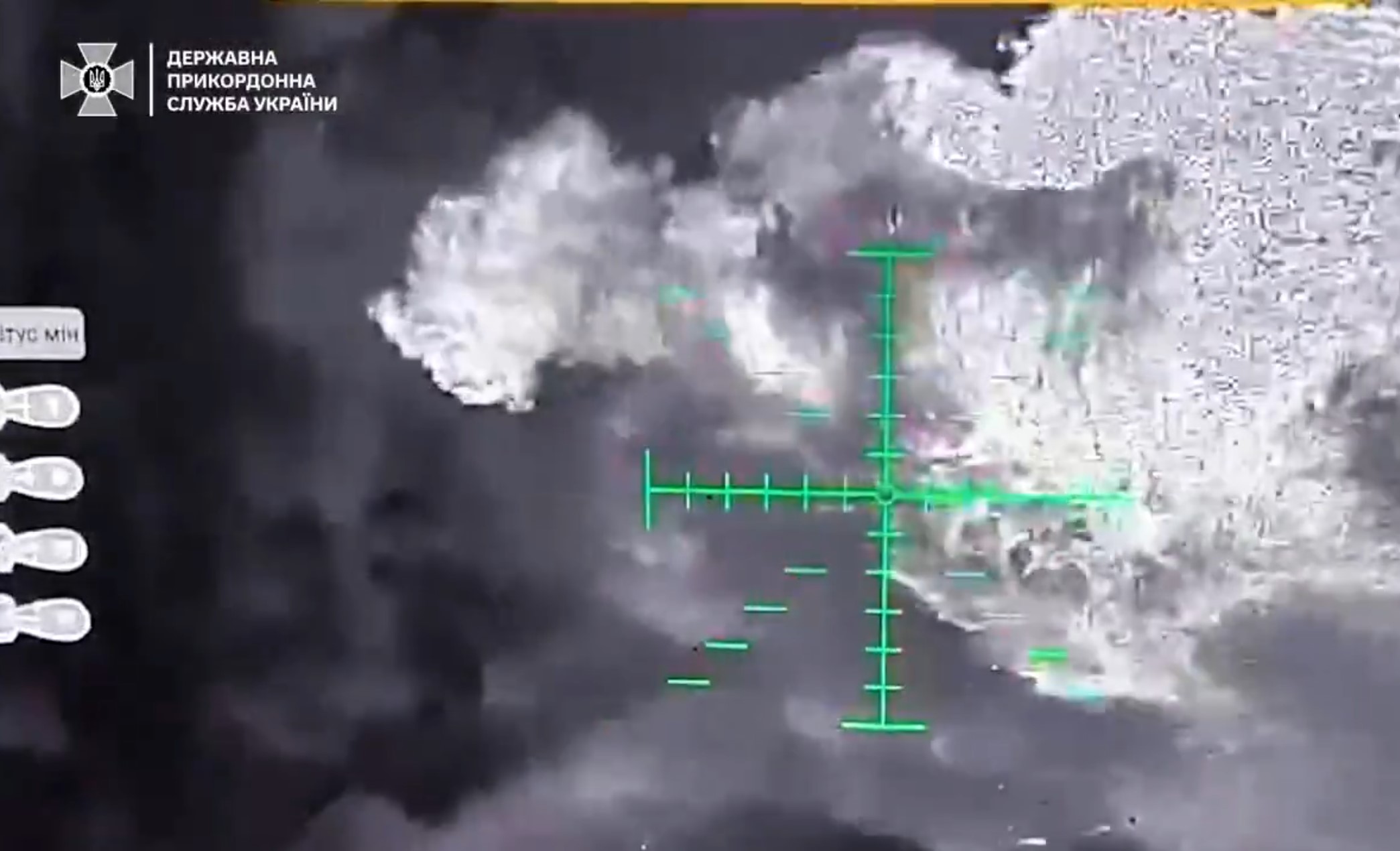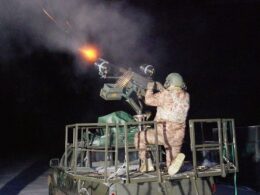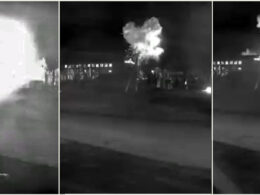Ukrainian forces have found a fiery solution to counter Russia's heavily armored "turtle tanks," deploying thermite-carrying drones that can burn through layers of improvised protection, Forbes war correspondent David Axe reports.
These Russian vehicles, dubbed "turtle tanks" for their extensive DIY armor additions, including sheet metal, grills, and even logs, have proven resilient against conventional explosive drones.
"All that extra protection might make the up-armored vehicles slow and difficult to steer, but it can also blunt the effect of the explosive first-person-view drones that are everywhere all the time along the 800-mile front line," Axe says.
The latest countermeasure employs what Ukrainian forces call "dragon drones," capable of delivering thermite charges that burn at temperatures reaching 5,000 degrees Fahrenheit (2,760 degrees Celcius). According to a 2000 US Army study, soldiers targeted by thermite have just 10 seconds to escape before risking fatal burns.
The effectiveness of these incendiary drones was recently demonstrated by Ukraine's Phoenix drone group near Kostiantynivka in Donetsk Oblast.
💥2 танки, 2 БТР, 2 БМП та БТС-4 – техніка ворога, пошкоджена й знищена завдяки успішній роботі операторів ударних дронів «Феніксу» @luhanskdpsu
— Державна прикордонна служба України (@DPSU_ua) February 9, 2025
Попри намагання противника прорвати наші позиції на Краматорському напрямку, прикордонники чинять йому гідний опір. pic.twitter.com/j4N8zX3D0a
"The border guards are putting up a worthy resistance," the State Border Guard Service announced after their units destroyed two tanks, two APCs, two IFVs, and an engineering vehicle in a single engagement.
The Phoenix team's recent success showcased both traditional explosive FPV drones and the new thermite variant. In at least one attack, operators landed a dragon drone directly on a vehicle's roof, where it "spat its molten metal, quickly burning through the vehicle's top armor," Axe details.
This wasn't the first time such tactics had been used. In October, a dragon drone targeted a tank, releasing thermite until the vehicle was reduced to a cinder. The Ukrainian Defense Ministry praised the Phoenix group for their success, stating, "Great job, warriors."
However, these tactical victories face strategic challenges. The Phoenix group and the 28th Mechanized Brigade are defending an increasingly vulnerable position – a five-mile-deep salient east of Kostiantynivka, now surrounded on three sides by Russian forces following the fall of Toretsk. The Ukrainian Center for Defense Strategies warns that these units may need to withdraw westward to avoid encirclement.
"Destroy one assault group, and two more take its place," Axe observes, highlighting the numerical advantage Russian forces maintain in critical sectors.
Read more:
- Ukrainian brigade defeats Russian divisions at Terny using drone warfare
- Ukrainian forces integrate infantry and drones into a united strike system
- Watch: Ukraine's Soviet S-300V1 air defense fires 8m interceptors at Russian ballistics
💥2 танки, 2 БТР, 2 БМП та БТС-4 – техніка ворога, пошкоджена й знищена завдяки успішній роботі операторів ударних дронів «Феніксу» @luhanskdpsu
— Державна прикордонна служба України (@DPSU_ua) February 9, 2025
Попри намагання противника прорвати наші позиції на Краматорському напрямку, прикордонники чинять йому гідний опір. pic.twitter.com/j4N8zX3D0a





